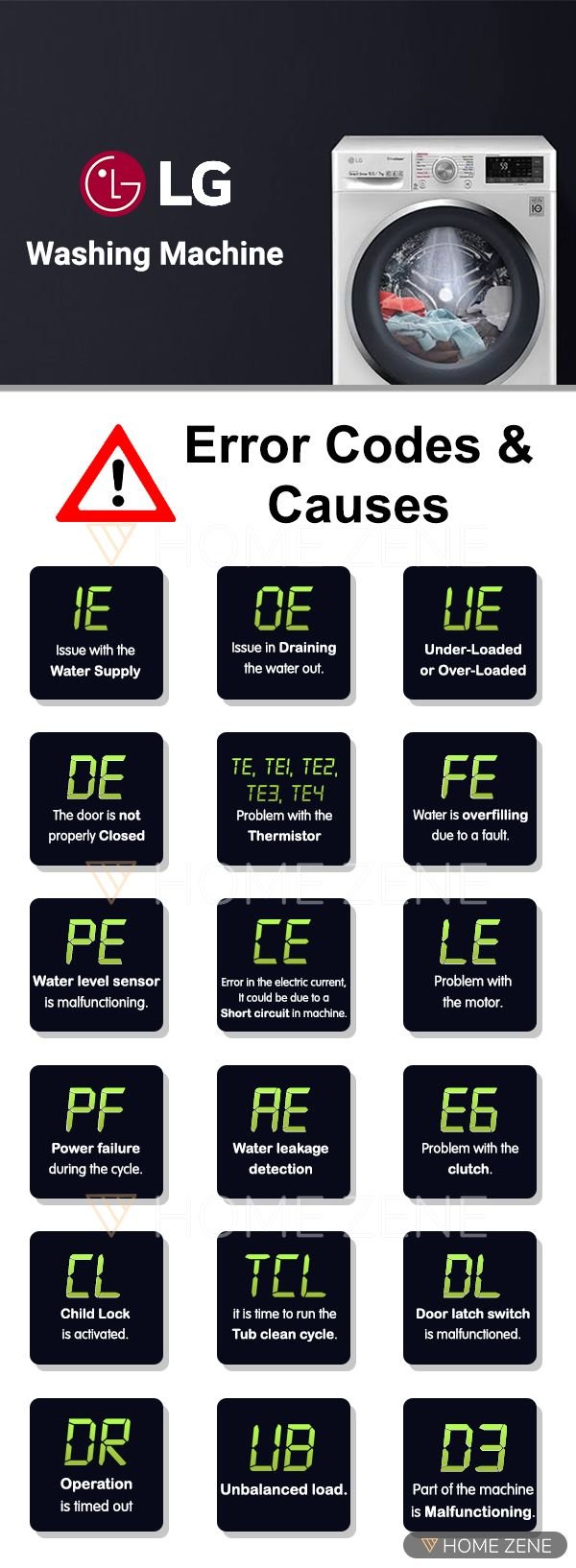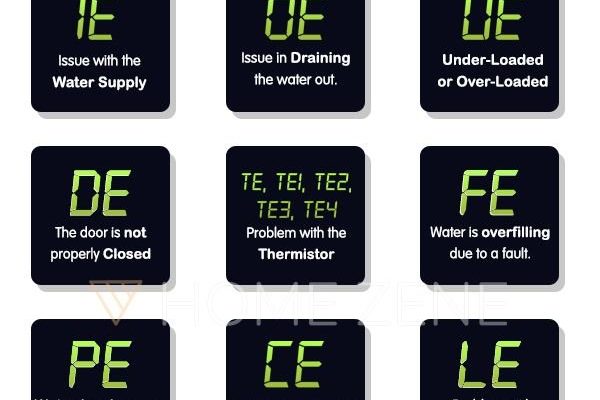
Let’s think of your washing machine as a mini factory where different processes happen in harmony to clean your clothes. Now, imagine if the heating department of this factory goes on strike – that’s exactly what the “HE” error code signifies. The heater isn’t playing its part, and this can disrupt the washing process, especially if you’re washing in hot or warm water settings. Understanding why this error pops up is the first step to resolving it and getting your washer back on track, and that’s what we’re going to delve into right now.
Understanding the Heater Malfunction
So, what exactly is happening when you see that “HE” error? At its core, an HE error suggests that the washing machine’s internal heater isn’t functioning properly. The heater’s job is to heat the water to the temperature you’ve selected for your wash cycle. If this doesn’t happen, it might be due to a faulty heating element or perhaps an issue with the machine’s wiring. Think of the heater as the heart of your washing machine’s water temperature system. If the heart isn’t working, well, the system can’t function optimally either.
You might be wondering why a heater malfunction would matter so much. Well, washing clothes, especially those with stains or delicate fabrics, often requires a specific water temperature. Cold water might not always do the trick, especially for heavily soiled clothes. Without the heater, your washing machine could simply be circulating cold water, which in turn, won’t clean your clothes as effectively. Moreover, in regions with hard water, a heater becomes even more crucial to dissolve detergents properly.
If you suspect a heating issue, do a quick check. You might notice your clothes aren’t clean, or the water doesn’t feel warm in cycles it should. These are signs pointing towards a heater issue. But hold on before you start poking around with a toolbox! Understanding the causes can help prevent unnecessary tinkering, and it can save you from potentially voiding your warranty.
Common Causes for the HE Error Code
Alright, let’s dive into why this error might be occurring. The most common cause is a faulty heating element. This can occur due to normal wear and tear, especially if the washing machine is used frequently at high temperatures. Imagine a light bulb – over time, even the best ones eventually burn out. The same principle applies to heating elements.
Another frequent culprit could be loose or disconnected wiring. Picture your washing machine’s internal wiring as the nervous system, sending signals to different parts. If there’s a break or loose connection, the heater might not receive the power it needs to function. This can happen if the washer is jostled or moved around, causing wires to become dislodged.
Lastly, issues with the thermostat or temperature sensor could be at play. The thermostat’s role is to gauge the temperature and ensure the water is heated correctly. If it malfunctions, it might not signal the heater to kick in, leaving the water colder than expected. The thermostat is like the thermostat in your home – if it’s not working, you’ll likely notice the temperature isn’t what it should be.
If you’re dealing with the HE code, the best step is to check for these issues. While some might be easy to spot, others will need a professional’s eye. Calling in a technician might save you a headache, especially if you’re new to handling appliances.
How to Fix and Prevent Future HE Errors
Now that you’ve pinpointed potential causes, let’s talk fixes. If you’re comfy with a screwdriver, replacing a faulty heating element might be within your capability. However, if the issue is with wiring or the thermostat, it might be safer and more efficient to reach out to an LG service professional. They have the tools and expertise to diagnose the problem accurately without causing further issues.
For those who love a bit of DIY, ensure the power is off before fiddling with anything inside the machine. Your safety is paramount! Look for signs of wear or burnt elements in the heating unit or any frayed wires. If you’re unsure, don’t hesitate to call in expert help. It’s also helpful to regularly check and replace any worn parts in your washing machine – think of it as a bit of TLC for your trusty appliance.
To prevent future occurrences of the HE error, consider avoiding consistently using the highest heat settings unless necessary. Just like you wouldn’t drive your car at top speed everywhere, it’s a good idea to use a balanced range of temperatures for your laundry. Also, keeping your machine clean and ensuring it stays in a stable location can help prevent loose connections or wiring issues.
Getting an HE error code can be frustrating, but with a little understanding and a proactive approach, it’s something you can tackle. Regular maintenance and understanding your washing machine’s signals can go a long way in preventing these hiccups. Remember, it’s not just about fixing the current issue, but also about keeping your washer running smoothly for years to come. And if all else fails, never shy away from calling in the professionals to keep your laundry days hassle-free. Keep an eye on your appliance, listen to what it’s telling you, and you’ll likely avoid a lot of unnecessary trouble.
